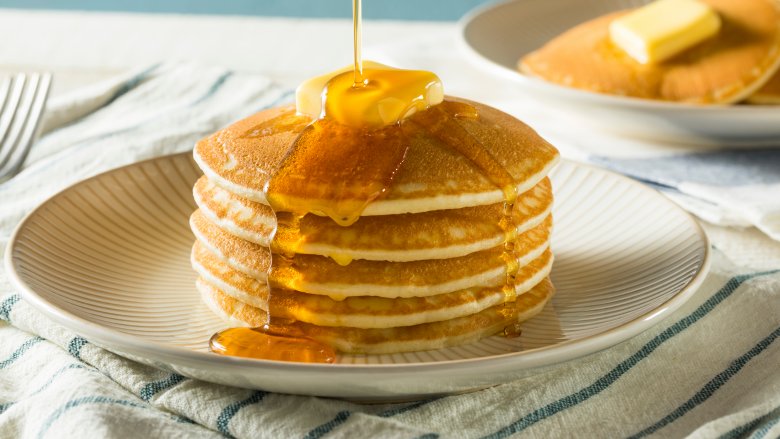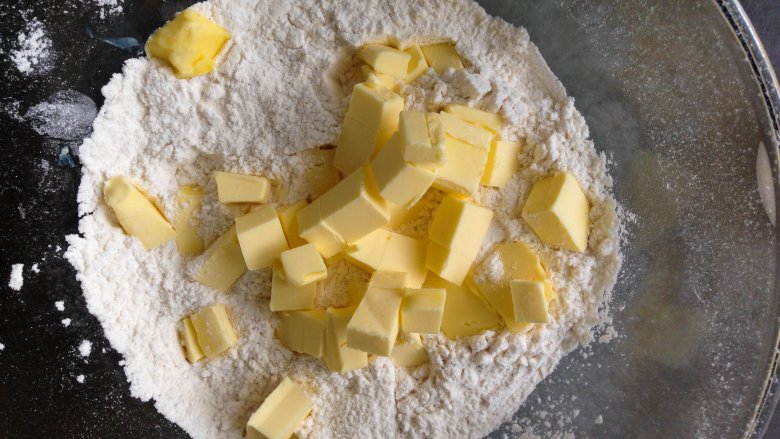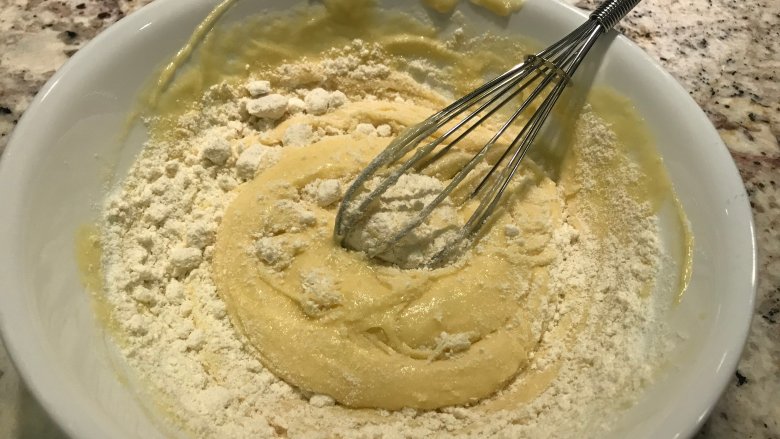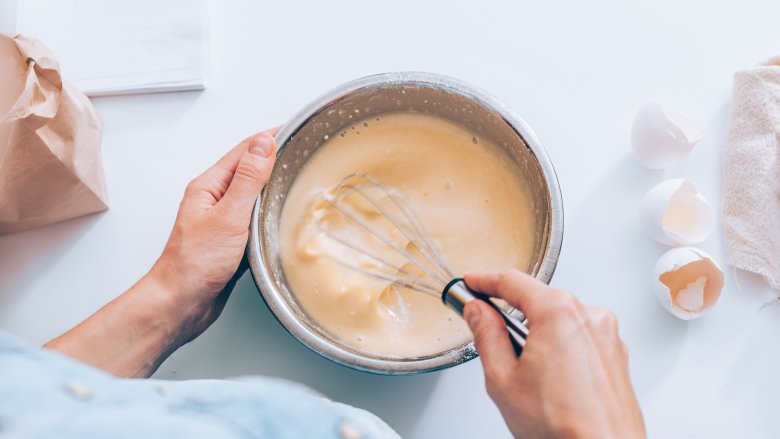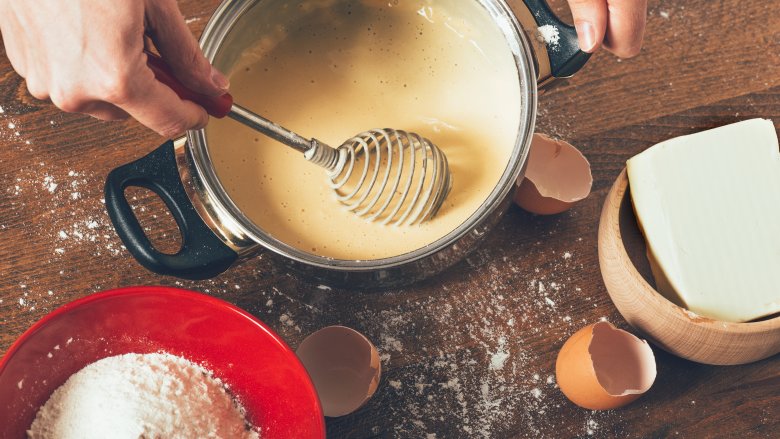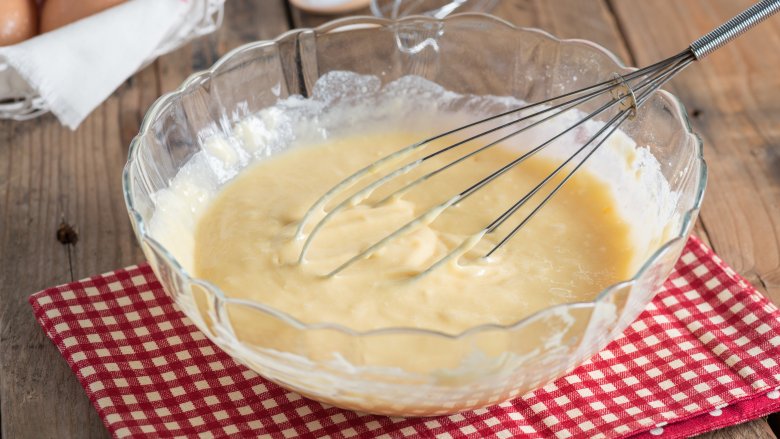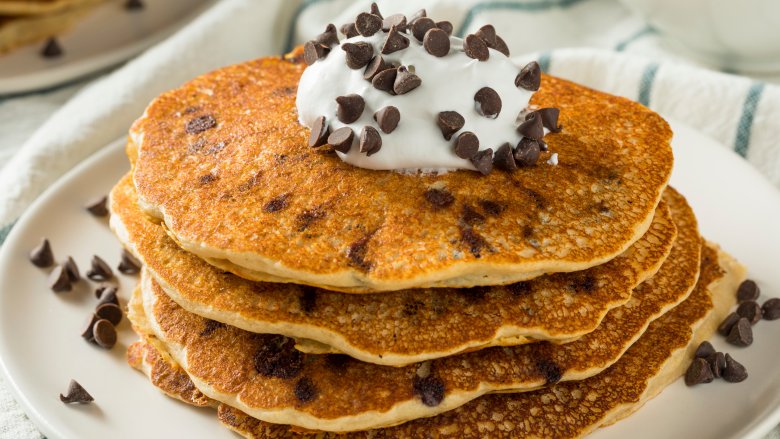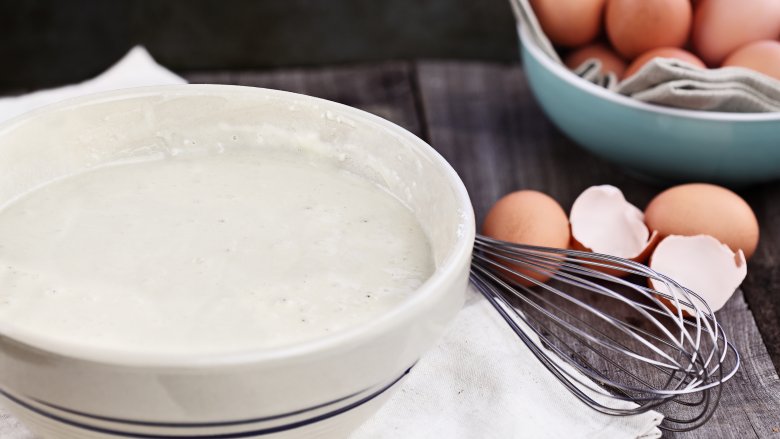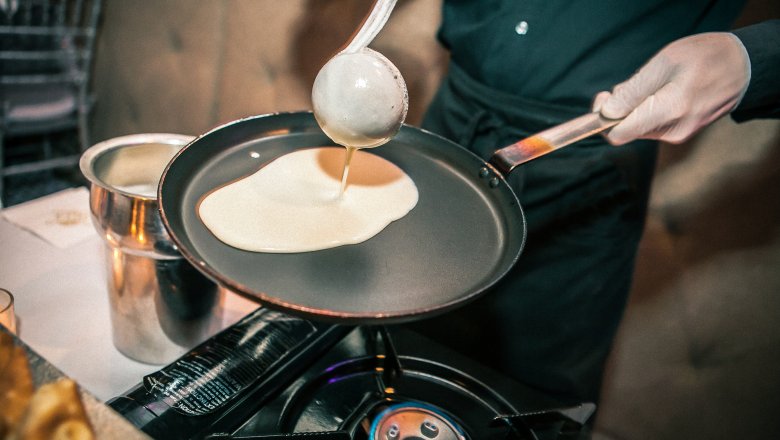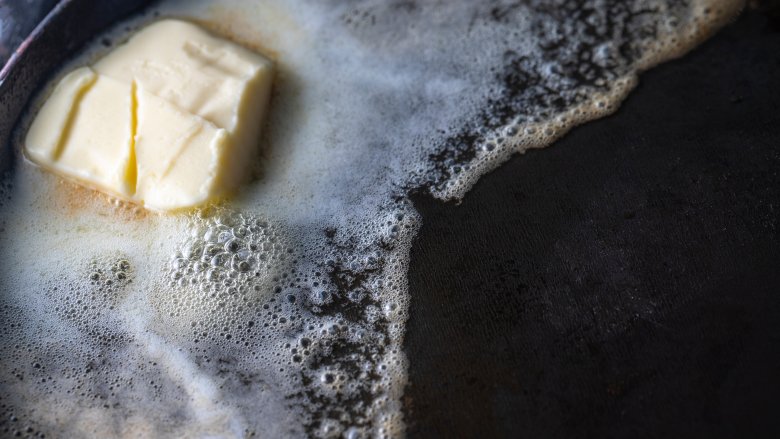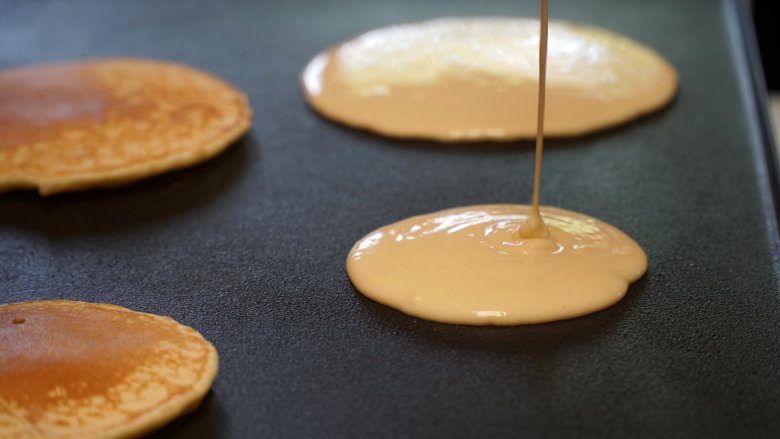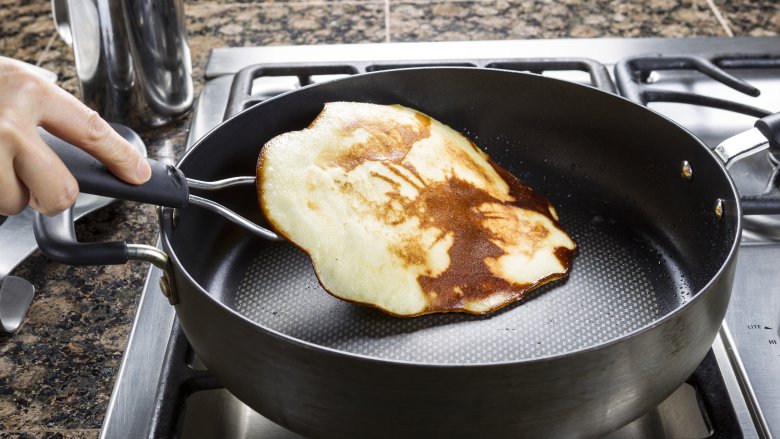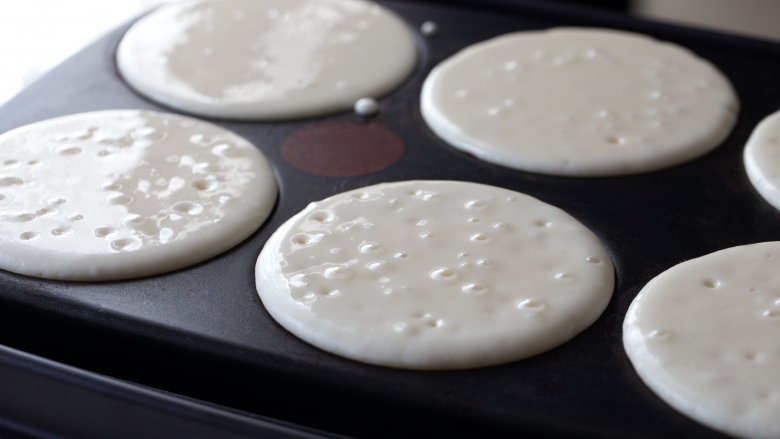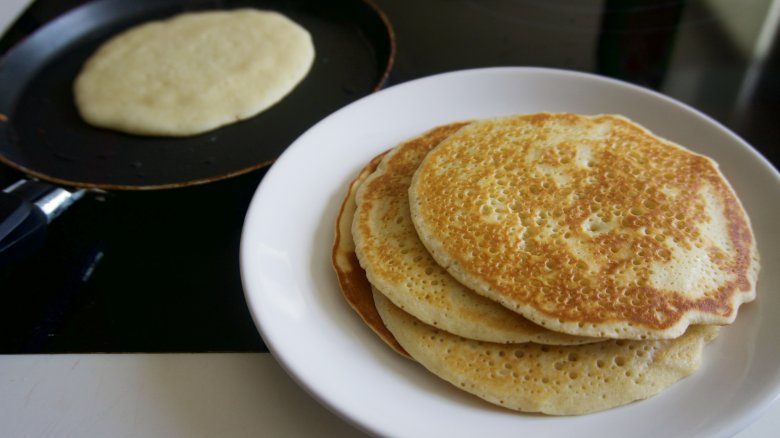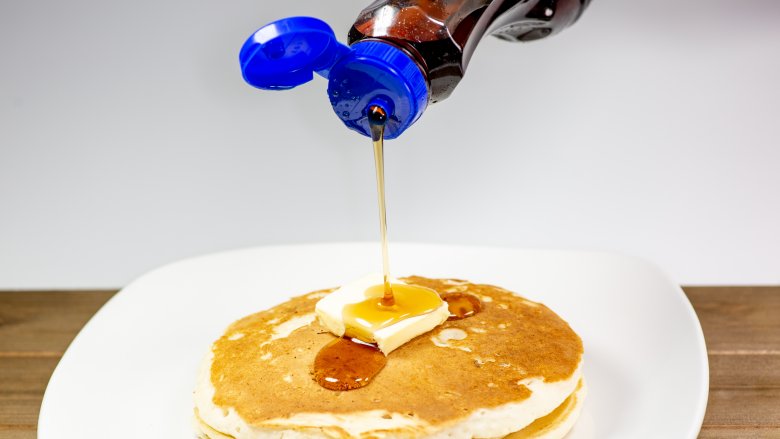14 Mistakes Everyone Makes When Cooking Pancakes
A stack of light, fluffy pancakes generously buttered and swimming in maple syrup is a weekend staple in my little New York City apartment. Among the city's beeping car alarms, throngs of people, and incessant hustle, this old-fashioned breakfast staple offers a simple and nostalgic weekly reprieve from the grind of everyday life. An easy-to-make meal that uses just a few basic pantry ingredients, truly dreamy pancakes represent immediately attainable happiness. And this perfectly sweet and savory food is indeed a cinch to make if you can avoid the common mistakes. Take note of these pitfalls and you'll always have the recipe for zen in your back pocket.
Using subpar ingredients
For any food requiring few ingredients, you should assume that using high-quality ones will yield better results. This certainly holds true when you want to produce the pancakes you've been dreaming about all week. Since baking soda helps pancakes achieve their full fluffy potential when they are heated, it's crucial to use a leavener that's no more than six months old. Doing so helps you avoid cooking up flat ones that are no fun to look at or eat. Bleached flour sounds just as unsavory as you'd imagine. This type has been chemically whitened. Opt for the unbleached kind, which has retained most of its nutrients and vitamins. And what distinguishes high-quality butter from lesser varieties? In short, the taste. Butter is graded from AA to B, with AA being the best for a pleasing taste, creamy texture, and light flavor. You can't go wrong with Grade AA unsalted butter for all your cake and pastry needs.
Overmixing the batter
It's easy to overmix the pancake batter in an effort to smooth out all the lumps, but don't do this! The more you stir, the more you work the gluten in the flour, resulting in tough and chewy pancakes instead of light and tender ones. Simply mix your ingredients together until everything is just incorporated and no streaks of flour are visible, leaving any remaining lumps. Don't fret about weird lumpy pancakes since they magically disappear during cooking.
Using the wrong whisk to mix the batter
While whisking the batter sets you off on the path to righteous pancakes, you also need to choose the right whisk for the job. I know. So much to think about, right? While narrower, more conventional French whisks are perfect for hard, vigorous stir jobs, you want to opt for the more bulbous, rounder balloon whisk for preparing your pancake batter. The latter has wires that are farther apart and create a rounder shape, hence the name. This type of whisk is best for this particular task because the ample space between the wires creates air during whisking, keeping your batter light and fluffy.
Not measuring everything
Unlike other kinds of casual cooking, cake batters — even for simple things like pancakes — are finicky. As with complicated layered cakes, pancake batter works because the proportions of the ingredients are just right. That means you should measure everything, from the flour and baking soda to the milk and salt. Too much baking soda, and your pancakes won't rise enough. Too little, and they'll rise too much and taste slightly bitter. In order to avoid wonky pancakes, pull out your trusty measuring cups and spoons.
Preparing the batter ahead of time
Leaveners like baking soda or powder are activated as soon as they come into contact with wet ingredients. As such, you don't want to make the batter too early. The leavener you're using will not work as well if the batter's been sitting around for a day or even an hour. Pancake batter takes about five minutes to make, so try to start prepping only when you're ready to cook and eat.
Adding too many fillings
As an overzealous cook myself, I fully understand the tendency to overdo add-ins. You should see the astronomical size of my omelettes...
That said, you want to exercise restraint when it comes to choosing what you fold into your pancake batter. While a small handful of yummy berries or chocolate chips lends sweetness and flair, resist the overwhelming urge to throw in everything and the kitchen sink. Doing so will make your batter heavy and uneven. An added risk of using too many fillings? They all sink to the bottom of the pancakes in the pan and burn. Noooo!
Not letting the batter rest
While you shouldn't leave your batter out for an hour before cooking, it is a good idea to set the bowl aside for about five minutes. Giving the batter a few minutes to rest allows the gluten in the mixture to relax just enough to avoid chewy pancakes.
Using a small frying pan
If you make pancakes frequently, I suggest investing in a griddle, which conveniently sits on two stovetop burners. The flat, roomy surface makes it easy to transfer your batter and flip your pancakes. Using a regular pan with sloped sides doesn't leave you quite enough room to cook multiple pancakes comfortably. Short of a griddle, you could try using a wide pan with a heavy bottom. The latter quality promotes even cooking.
Greasing your pan with butter
While you might instinctively cook your pancakes using butter, this actually isn't the best option. The milk solids in butter means it has a relatively low smoking point, burning quite easily. A better option would be to use clarified butter since the milk solids have already been separated from the fat. Otherwise, opt for a neutral oil such as grapeseed or canola. Whether you use clarified butter or oil, use a clean paper towel to apply it to your griddle or pan. Doing so ensures that the pan is evenly coated. No sticky business.
Pouring the batter directly from the bowl to the pan
If your goal is to whip up perfectly uniform pancakes that are all the same consistency, then you're my kind of cook. Avoid pouring the batter directly from your mixing bowl onto the pan or griddle. Doing so may seem like a way to save dishes, but it ends up producing misshapen pancakes that are different sizes, not to mention messy. In order to have more control over the stream you're pouring, try using a ladle or small measuring cup, about ¼ or ⅓.
Flipping too soon or too often
While you might get overly excited about the prospect of eating pancakes, exercise the utmost patience during cooking. You should cook the pancakes until you can see bubbles begin to form on the surface, signaling the big flip. Flip your pancakes exactly once.
Cooking pancakes at the wrong temp
If the bottoms of the pancakes are too dark and bubbles haven't formed, this indicates that the heat level is too high. On the flip side, if the bottoms are not yet golden and the bubbles have already formed, you'll know that the heat level is too low. Adjust accordingly.
Not testing the first pancake
Like crepes, pancakes require the perfect heat level and timing in order to maximize their glory. This inevitably means that the first pancake you make should be a test run — the time to gauge the heat level and notice if certain areas are cooking unevenly. Adjust so that your real official batch will be just right.
Using processed pancake syrups
While commercial pancake syrups come in familiar and comforting packaging, they should be a last resort. These fake syrups are made of processed sugars and contain artificial flavors and colorings. Your best bet is to stick with pure maple syrup even if it is a little more expensive. Your pancakes deserve the best.
And if real deal maple syrup isn't in the cards, try skipping the syrup completely. Instead, use fresh fruit, pie filling, whipped cream, peanut butter, or anything else that sounds good to you.
